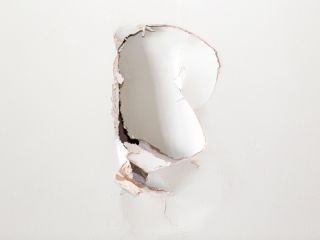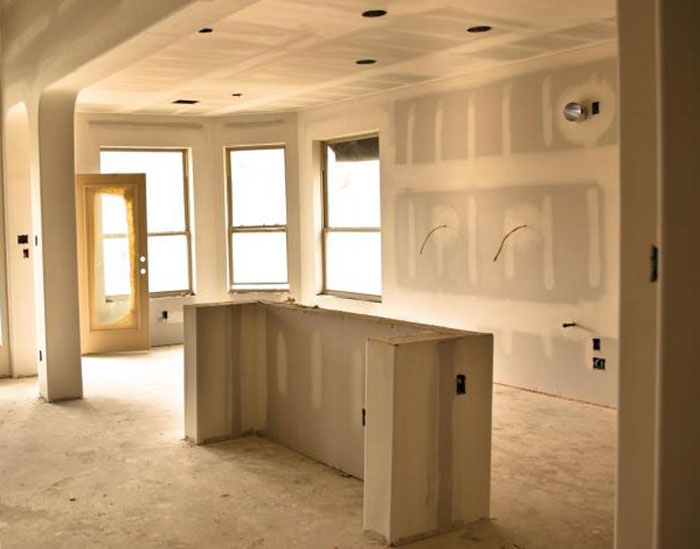Step-by-Step Approaches to Achieving Flawless Drywall Repair and Installment
Achieving perfect drywall fixing and setup calls for a methodical strategy. It entails understanding the different kinds of drywall and the devices required for the job. Correct location preparation is vital prior to beginning any job. Drywall Installation Ogden Utah. Each action, from patching holes to setting up new sheets, needs attention to information. The procedure does not end with installation; ending up strategies are critical for a sleek look. The following steps will ensure a smooth result, however just what do they require?
Recognizing Drywall Types and Devices Needed

The setup tools are equally essential. An utility blade is crucial for cutting drywall sheets, while a drywall saw can assist in making accurate cuts for fixtures or outlets. T-squares assure accurate measurements, and drywall screws or nails safeguard the panels to wall studs. Additionally, a drywall lift can facilitate the installation of big sheets, minimizing physical strain. Knowledge with these kinds and devices appreciably contributes to the efficiency and high quality of drywall projects.
Preparing the Location for Fixing or Setup
Preparing the location for drywall repair work or installment is important to ensure a smooth and efficient procedure. First, the surrounding room must be free from furniture and other obstacles to give enough working space. This not only guarantees safety and security but additionally stops damages to personal belongings. Next, it is important to cover the floor with drop fabrics to capture any kind of debris or dirt created throughout the job.
Additionally, the walls need to be checked for any kind of loose paint or wallpaper that might disrupt adhesion. Eliminating these elements develops a clean surface area for the brand-new drywall. Before beginning, it is suggested to shut off power to electric outlets or fixtures around. Making sure sufficient lighting in the office will further enhance presence and focus during the repair service or installment procedure. drywall contractors. By diligently preparing the location, one prepares for a successful drywall project
Step-by-Step Process for Patching Holes

Covering holes in drywall requires an organized strategy to assure a seamless repair service. The very first step involves evaluating the dimension of the hole. For small holes, a patching compound may suffice, while bigger openings require a patch. Next, the damaged location must be cleaned and prepared by eliminating any loose debris.
For tiny holes, using spackling substance with a putty blade is advised, smoothing it over the opening and feathering the sides. As soon as completely dry, fining sand the area assures a smooth surface. For larger openings, a drywall patch ought to be reduced to dimension, placed over the opening, and secured with screws. After setting up the patch, the exact same spackling process is repeated, complied with by fining sand.
Lastly, the patched location must be topped and repainted to match the bordering wall. This careful process ensures an expert appearance and prolongs the life expectancy of the fixing.
Setting Up New Drywall Sheets: A Comprehensive Overview
Mounting brand-new drywall sheets requires mindful preparation and implementation to ensure a visually appealing and tough surface. The location must be determined properly to identify the number of sheets required. It is crucial to select the ideal thickness, typically 1/2-inch for interior wall surfaces and 5/8-inch for ceilings or fire-rated applications.
Next off, the studs or structure must be inspected for any irregularities, making certain they are aligned and effectively spaced. When putting the drywall sheets, they must be placed flat to minimize seams and enhance architectural stability. A drywall lift can be helpful for overhanging setups.
Attaching the sheets with drywall screws at ideal intervals ensures a secure setup. It is essential to countersink the screws somewhat below the surface to prepare for the finishing process. Adhering to these standards will result in a strong foundation, ready for the next steps in drywall completing.
Completing Touches: Taping, Mudding, and Sanding Strategies
Once the drywall sheets are firmly fastened, the emphasis changes to the complements that will certainly provide a polished look. This process begins with taping, making use of either paper or fiberglass fit together tape to cover the joints in between sheets. The tape guarantees a smooth change, decreasing the risk of splitting. Following insulation, mudding is essential; a joint compound is used over the tape to fill spaces and create a seamless surface. Usually, numerous coats are essential, each one feathery out better than the before reduce exposure.
After enough drying time, fining sand is the last step in attaining a flawless surface. A fine-grit sandpaper is used to smooth the dried out compound, guaranteeing there are no bumps or flaws. Attention to detail during this phase is significant, click here as it greatly impacts the general appearance of the wall. The end outcome ought to be an also, professional-looking surface all set for priming and painting.
Regularly Asked Concerns
Just how Do I Pick the Right Drywall Density for My Project?
To select the right drywall thickness, take into consideration the job's objective, place, and structural requirements. Standard thicknesses include 1/2-inch for general usage and 5/8-inch for fire-rated applications, making certain toughness and conformity with building regulations.

Can I Set Up Drywall Over Existing Drywall?
Yes, setting up drywall over existing drywall is feasible. It is crucial to assure the underlying surface area is secure and totally free from damages. Correct fastening and factor to consider of density are important for an effective setup.
What Are the Ideal Practices for Drywall Disposal?
The best practices for drywall disposal consist of recycling when feasible, utilizing local waste administration solutions, and following guidelines for hazardous materials if suitable. drywall contractors. Appropriately identifying and securing waste warranties conformity and safety and security during disposal
Exactly how Long Should I Await Mud to Dry Before Sanding?
Normally, one need to wait 24-hour for drywall mud to completely dry before sanding. Nevertheless, drying time can differ based on moisture and temperature level, so checking for a company texture is suggested before continuing.
Exist Eco-Friendly Drywall Options Available?
Yes, environmentally friendly drywall choices are available. These options commonly use recycled materials, low-VOC adhesives, and sustainable production methods, reducing environmental effect while giving effective insulation and resilience for various building and restoration tasks.
An energy blade is important for cutting drywall sheets, while a drywall saw can help in making specific cuts for components or electrical outlets. Preparing the area for drywall repair or installation is essential to guarantee a efficient and smooth process. Patching openings in drywall needs a systematic approach to guarantee a seamless repair service. Installing new drywall sheets needs cautious planning and execution to ensure a visually attractive and strong coating. Yes, mounting drywall over existing drywall is possible.